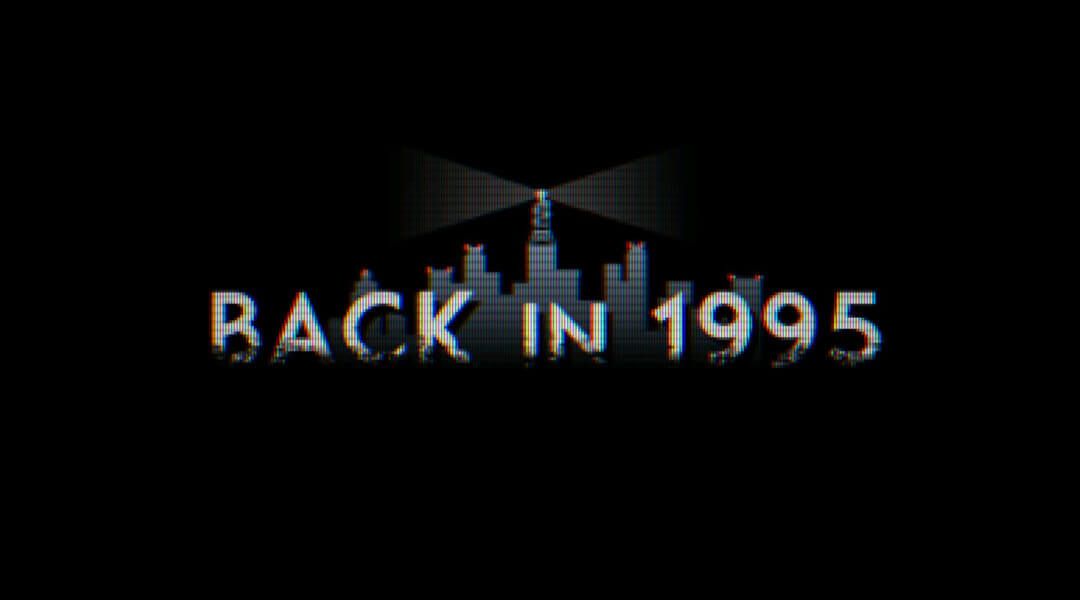Back in 1995 is a game that aims to make gamers feel like it was 1995 again, and while it succeeds in garnering a retro aesthetic, it falls far short everywhere else.
Drawing heavy inspiration from mid-90s titles like the Japanese-developed Doctor Hauzer and Silent Hill, Back in 1995 exists almost solely to take gamers on a journey through time and play a game that looks and feels like it came out of the mid-90s. While it certainly does this, Back in 1995 fails to capture more than just a look - it doesn't entertain, challenge, or provide any memorable aspects aside of stylistic flair, despite an apparent effort from solo developer Takaaki Ichijo.
To its credit, the aesthetic of Back in 1995 does hearken to the year of its namesake: CRT visuals cascade over the screen in realistic fashion, sending players back to a time of bulky tube-based televisions and murky, stretched visuals. Faux loading screens feature a pixelated rotating disc icon akin to games on the original PlayStation, and the game even goes to a fake input screen of a television on occasion, as if a cable became loose on the gamer's display. Those who screenshot via Steam will also notice that screenshots gain an RGB color wave tint, like an old CRT screen was photographed. These are nice visual touches which cater to a player's nostalgia, but it takes more than visuals to provide an entertaining title.
Gamers who quest through Back in 1995 will find little entertainment in both gameplay and plot to keep their attention locked in a vice. For a game with a limited number of quests, Ichijo failed to mix anything up - once players have completed the first fetch quest, they should be prepared for the rest of the game to repeat the same quest in slight variants. Though the game eventually builds some semblance of a plot, everything in the beginning will seemingly happen for no reason, and it doesn't get much better once the explanation comes into play in the final chapter.
The game is also plagued by invisible wall syndrome, where parts of a map - which are clearly physically accessible to the player - are blocked off with an omnipotent "it's not time to go here yet" message, until the player activates some part of a relevant task. These tasks are always finding different notes hidden around the level, often locked behind a simple numeric passcode that can be solved by finding other notes. These are the repetitive fetch quests that were mentioned before, and they never get more interesting than finding notes along the floor.
Enemies lurk around the game's four levels in set patterns, though sometimes they seem not to register when the player is there, allowing free attacks with no risk of return damage. Sometimes their sudden appearance comes as a total surprise, as the game's purposefully-sloppy preset camera angles make for a frustrating and inconvenient time as the player attempts to navigate the otherwise simple and straightforward levels the game provides. The player can also utilize a pistol and a shotgun within the game, although the 'aim and shoot' interface frequently stops working, and leaves much to be desired. Thankfully, the enemy attacks are just as sloppy, and players will always have ample time to casually walk out of the way of enemy attacks.
Translation errors also lead to problems, such as when the player is looking for a 'safe', when the game actually meant a locked door. The Steam description of Back in 1995 says the game completion time runs in at a short 2-3 hours, but players should be able to jaunt through the game's challenges (or lack thereof) in 90 minutes, without rushing anything along.
In the end, Ichijo set out to create a game that looked and felt like it came out of 1995. To that end, Back In 1995 is a complete success: it brings waves of nostalgia, riddled with all the faults of old game design mentalities and shortcomings. As an experiment it was certainly a success, but as a game, it completely falls apart under the weight of these flaws. Enemy AI is atrocious, levels are bland and boring, and the game mechanics each bring their own set of problems into the mix. This isn't a fun game, just a social experiment in nostalgia.
Coming in with a $10 price tag, this title should only be purchased by gamers yearning to remember gameplay from 1995, and who don't want to use an old console or emulator for the experience. While it certainly looks and feels like a game from 1995, it's not a game that most would have purchased back then, either.
Back in 1995 is currently available for the PC. Game Rant was provided a PC code for this review.
Trailer
[HTML1]

